Have you ever wondered whether you should try snorkeling or scuba diving? Snorkeling vs scuba diving both activities offer a chance to see some amazing underwater creatures, but they’re quite different experiences. In this blog post, we’ll compare and contrast snorkeling and scuba diving, to help you decide which one is right for you.
Snorkeling and scuba diving are both popular water sports that offer different experiences. So which one is right for you?
In this article, we’ll break down the pros and cons of snorkeling vs scuba diving to help you make the decision that’s right for you.
Overview of Snorkeling vs Scuba Diving
So, you’re considering taking up a new hobby and you’ve narrowed it down to either snorkeling or scuba diving. But which one is right for you?
Here’s a brief overview of the pros and cons of each activity:
Snorkeling:
–Pros: Inexpensive, can be done almost anywhere, easy to learn
–Cons: Limited mobility, can’t go deep into the water
Scuba Diving:
–Pros: Can go deep into the water, more mobility than snorkeling
–Cons: More expensive, can be more difficult to learn
The Pros of Snorkeling
Snorkeling is a popular activity because it is both educational and fun. Snorkeling allows people to explore the natural wonders of the ocean while learning about its biodiversity. It is also a safe activity because it only requires a mask and some fins. The activity is popular because it is both educational and fun, and it is a safe activity.
People from all backgrounds and ages love to go snorkeling. It is a great way for people of all ages to learn about the natural wonders of the ocean. Snorkeling is a popular activity for many reasons. One reason is that it is a low-risk activity.
It is relatively easy to learn how to safely operate a snorkel, and most snorkelers are in good physical health. This makes it a safe activity for people of all ages and backgrounds.
Snorkeling is a good way to explore the ocean’s biodiversity. The activity enables people to explore fish and coral reef habitats. It also gives people the opportunity to observe marine life that they would otherwise miss.
Snorkeling is a great way to discover new species and discover hidden corners of the ocean. People who snorkel are more likely to become interested in ocean conservation and research. This is because it is a fun way for people of all ages to explore their environment.
Snorkeling is a fun activity that is safe for people of all ages and backgrounds. It is a low-risk activity that is easy to learn and safe for people of all ages and health statuses. This makes it a great way to learn about the natural environment and a great way to have fun in the process.
On land, it’s difficult to learn how to use snorkel equipment. Some people are afraid of the ocean’s water pressure and temperature. To them, snorkeling is the only way to experience the ocean.
It is difficult to find safety gear in small towns. People usually have to travel to a more populated area to buy snorkeling equipment. If they want to learn to safely use their gear, they will have to travel to a more populated area.
Despite some disadvantages, snorkeling is a fun and safe activity. It is a great way for people of all ages and backgrounds to learn about the natural environment and have fun doing so.
This makes it a popular recreational activity. However, snorkeling requires a lot of training and requires certain safety equipment. Even so, it is still a great way to explore the ocean’s biodiversity and have fun doing so.
The Pros of Scuba Diving
Scuba diving is a popular recreational activity that involves breathing underwater gas mixtures through a set of diving equipment. Scuba diving is a lot of fun and is also a great way to meet new people. However, scuba diving can also have some downsides. The pros of scuba diving are explained in this essay.
Scuba diving allows the user to explore underwater ecosystems and learn about marine life. Scuba divers can collect valuable scientific data during their dives. They can also help preserve and protect these underwater ecosystems.
Scuba diving is a great way to get up close and personal with underwater ecosystems. It is also a fantastic approach to educating people about the ocean’s beauty. Many people have a deep respect for the ocean after experiencing its hidden depths first-hand through scuba diving.
Scuba diving is a lot of fun and is also a great way to meet new people. Many people first learn about scuba diving through Boy Scouts or Girl Scouts. Some people also learn to scuba dive while on vacation. Due to the popularity of scuba diving, there are scuba diving clubs all over the world.
People of all ages and backgrounds participate in scuba diving. This makes it a great way to meet new people and forge friendships. Scuba diving is a great way to socialize and meet new people.
Scuba diving can also have some downsides. First, it can be expensive. You will need to purchase expensive scuba diving equipment and training. Second, scuba diving can damage underwater ecosystems and marine life. Third, some people are allergic to the ingredients used in scuba tanks. Lastly, scuba diving requires a lot of space— something not always available.
Despite some downsides, scuba diving is a lot of fun and is also a great way to meet new people. However, it can also have some minor impacts on the environment. Knowing about and minimizing these impacts is essential for people who do choose to scuba dive.
People who scuba dive should always be mindful of the impact their hobby has on the environment. People who scuba dive should also support organizations that help minimize scuba diving’s environmental impacts.
The Cons of Snorkeling
For many people, the idea of snorkeling is scary because of the danger that is associated with it. Snorkeling can be dangerous if safety procedures are not followed. However, there are ways to make it safe. By knowing the equipment that is needed and the safety procedures, anyone can have a safe time underwater.
One reason why snorkeling is dangerous is that it requires deep water. People who are not properly trained can get into trouble or even drown in shallow water. It is also extremely easy to get lost in the reef and not be able to find the surface. In order to be safe while snorkeling, one must know how to use the right equipment and safety procedures.
Clothing is one of the most important parts of any dive. Clothing must be able to withstand the pressure of the water, as well as protect the diver from injury. It is also very important to have a dive bag to put all of the diver’s belongings in. In addition, having a dive knife means that there is a way to defend oneself underwater. It also means that there is a way to help others who may be in need of assistance. Proper clothing makes driving much safer.
It is also essential to have the right equipment when diving. One must have a diving mask that fits well and is easy to adjust. In addition, the mask must fit well so that the diver can breathe easily. It is also essential to have goggles that fit well and are easy to adjust. Finally, the diver must have a snorkel so that he or she can breathe easily underwater.
In addition, it is also essential to have the right equipment when diving. One must have a diving tank that is easy to fill and has good air pressure. It is also essential to have a good dive computer so that the diver can gauge their oxygen level. It is also essential to have a good dive knife so that the diver can defend themselves underwater.
It is also essential to have the right equipment when diving. One must have a good dive safety vest so that they can protect vital organs on their torso. It is also essential to have good buddy cylinders so that air can be shared if one runs out of air. Finally, it is essential to have good dive lights so that the diver can safely navigate underwater.
For anyone to have a safe time while snorkeling, they must know how to use the right equipment and safety procedures. Proper clothing and equipment make diving much safer. In addition, proper training makes diving a very safe activity.
The Cons of Scuba Diving
Scuba diving is a popular form of aquatic recreation. The word “scuba” is an acronym derived from the Latin words for the diving bell, compressed air, and tank.
Scuba diving is diving with a closed-circuit breathing apparatus that allows for underwater navigation and observation. The sport of scuba diving has grown tremendously in the past few decades. However, the sport comes with its pros and cons.
Scuba diving can be dangerous and may even lead to death. Scuba diving is a high-risk sport that requires specialized training and equipment. Misuse of equipment, poor planning, and poor judgment can lead to death while scuba diving. For example, improper use of a diving tank can lead to compressed-air embolism.
Also, scuba divers should never dive deeper than the depths at which they are trained. Improper planning can result in shallow air pockets or gas mixes that are toxic to divers. Diving too deep or diving for too long periods of time can result in decompression sickness, also known as the bends. All these factors prove that scuba diving is a high-risk sport.
Scuba diving can be expensive to operate. A typical scuba-diving trip lasts two to eight hours. Additionally, equipment such as a diving tank and regulators must be purchased and maintained.
Gas bottles must be regularly refilled. Additionally, diving must be booked in advance to avoid the risk of low demand and low supply. Due to these factors, scuba diving can be expensive. This explains why scuba divers must be compensated for their efforts.
Scuba diving can damage the environment. Scuba divers must be very careful when exploring underwater areas. Damage to the environment can result from improper use of equipment or from improper disposal of waste.
For example, diving equipment can harm coral reefs or damage shipwreck structures. Scuba divers must be very careful when exploring underwater areas.
Although it can be dangerous, scuba diving is a safe way to explore underwater. This is thanks to the closed-circuit breathing apparatus. This technology makes scuba diving very safe.
However, the sport is still far from being completely risk-free. Scuba divers must always remain under the watchful eye of someone who has the experience and knowledge to mitigate risk.
Apart from exploring underwater areas, scuba diving can be educational. Many people learn about shipwrecks, marine life, and much more while scuba diving. Exploring underwater areas can be a great way to learn new facts, as well as a way to connect with the environment.
Overall, scuba diving can be dangerous and can even lead to death. Scuba diving is a high-risk sport that requires specialized training and equipment. Misuse of equipment, poor planning, and poor judgment can lead to death while scuba diving. This is why many scuba divers must be compensated for their efforts.
On the other hand, scuba diving is a safe way to explore underwater. It is also a great way to connect with the environment. Scuba diving can be very educational as well.
All these factors make scuba diving a worthwhile activity. One must consider the pros and cons of scuba diving before deciding whether to participate in this sport.
Important Equipment of Snorkeling
Snorkeling is a popular activity that allows people to explore underwater landscapes and view aquatic wildlife. Snorkeling requires a number of essential equipment including a snorkel, mask, fins, and a rash guard. A mask is necessary to view underwater scenery while fins allow you to swim freely underwater.
Snorkeling is an underwater activity that involves looking at aquatic plants and animals through a mask or snorkel. A common piece of equipment used for snorkeling is scuba diving gear, which includes both a wet suit and fins. The scuba diving gear helps keep the swimmer warm in cold water and supports their weight while they are submerged.
- What is a snorkel?
- Types of snorkels
- How to use a snorkel
- Benefits of using a Snorkel
A snorkel is an important piece of equipment used while snorkeling. It allows the snorkeler to breathe underwater while keeping most of their head and body underwater. There are different types of snorkels, each with its own unique features and advantages.
A standard snorkel has a mask, hoses, and snorkel stem attached. The mask is designed to fit over the wearer’s face and has a Snorkel Tube that goes into the water. This tube directs air to the user’s mouth, preventing water from entering their lungs.
Self-Sealing Snorkels are also typically equipped with a snorkel tube, but the tube is connected to a valve on the top of the snorkel. When the user inhales, water pressure forces the water into the tube, shutting off the valve and allowing the snorkel user to exhale. This type of snorkel is beneficial for divers who want to avoid getting water in their mouths.
Punctured Snorkels are designed to be fitted over the mouth and nose only. They do not have a snorkel tube, but the snorkel’s permeable silicone membrane filters water as the user breathes. This type of snorkel is usually used for snorkeling in rough or turbulent water.
Waterproof Snorkels are the most durable and typically include a buoyancy control device. This allows the snorkel to remain above the water column even when full of water. This is beneficial for divers who want to keep their snorkel=”#; safe and stable while they are snorkeling.
Although there are many types of snorkels available, the standard snorkel is the most common and is the best choice for most snorkelers. It is easy to use, has a comfortable fit, and allows the snorkeler to breathe and view the environment simultaneously.
A snorkel is an important piece of equipment used while snorkeling. It allows the snorkeler to breathe underwater while keeping most of their head and body underwater. There are different types of snorkels, each with its own unique features and advantages. A standard snorkel has a mask, hoses, and snorkel stem attached.
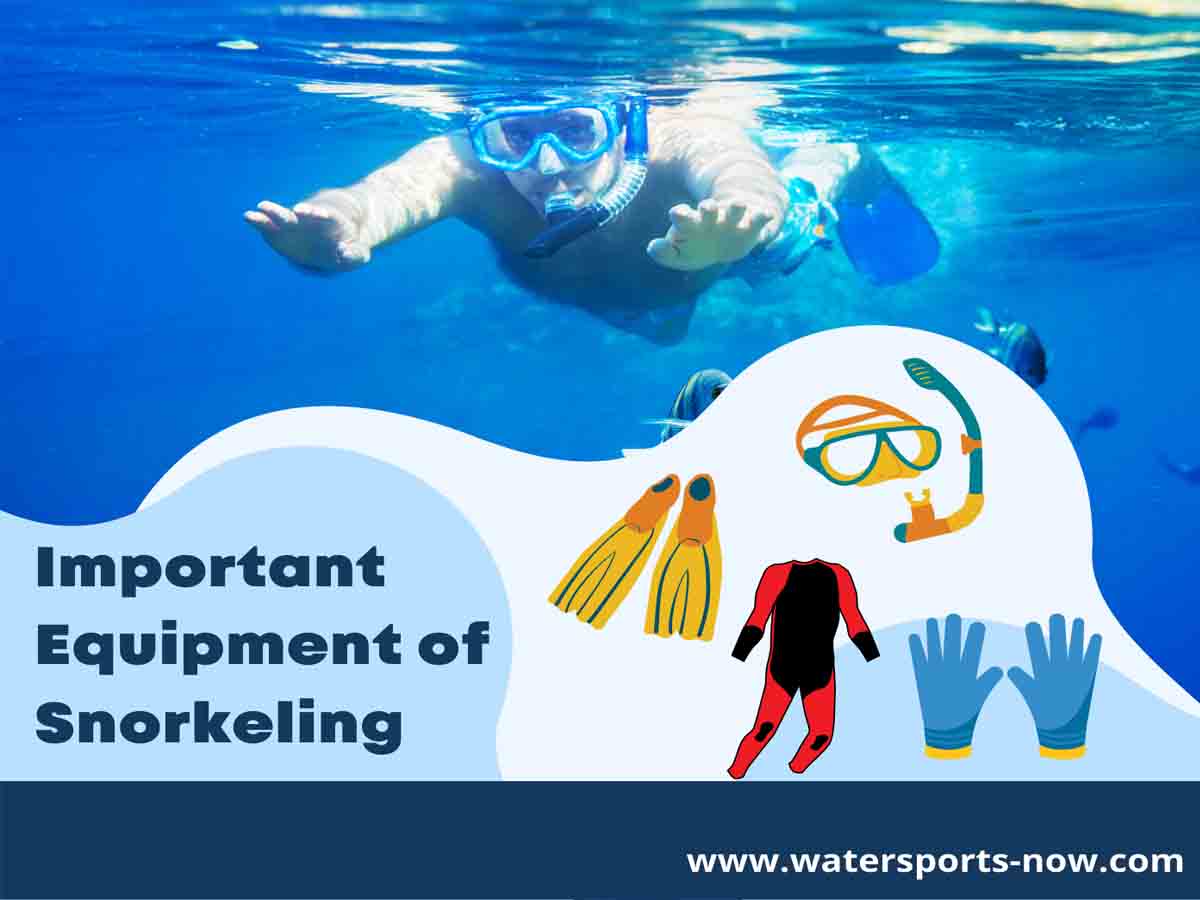
Important Equipment for Scuba Diving (What to Wear Snorkeling)
In this article, we will examine the equipment that is essential to scuba diving. Scuba diving requires a specialized breathing apparatus. This specialized breathing apparatus allows divers to breathe underwater while underwater. Scuba divers also carry various other equipment, such as regulators, tanks, and wetsuits.
They also carry various other equipment, such as knives, a spare tank, and other tools. Scuba divers use all this specialized equipment to explore underwater caves, swim with sea creatures, and much more.
However, not every diver requires every piece of equipment. Therefore, it is essential for divers to purchase the equipment that is most necessary for their diving interests and skill level.
Scuba diving requires a specialized breathing apparatus. This specialized breathing apparatus is called a scuba tank. A scuba tank allows divers to breathe underwater and stay underwater for a specified time. Divers must attach the tank to their bodies when diving.
They also must attach the tank to the scuba diving apparatus, which is a tank that holds the compressed air that divers breathe. Scuba diving also requires a regulator, which is a device used to control the amount of air that a diver inhales underwater. Without a regulator, divers will not be able to breathe underwater or stay underwater for long periods of time.
Scuba divers must also carry with them various other equipment, such as regulators, tanks, and wetsuits. They must also carry with them various other equipment, such as knives, a spare tank, and other tools. Scuba divers must carry a spare tank in case their first tank runs out of air. They must also carry a knife and other tools in case they need to repair equipment or help a diver in need.
All scuba divers also carry with them various other equipment, such as regulators, tanks, and wetsuits. They also carry various other equipment, such as knives, a spare tank, and other tools.
Scuba divers don’t need knives or other tools. They use their tanks for cutting and tearing things. Wetsuits are used to keep divers warm underwater. Divers can control the temperature of the water inside the tank with a control.
Despite the specialized equipment required for scuba diving, scuba diving can be done without a specialized breathing apparatus. Many people feel that scuba diving doesn’t require a specialized breathing apparatus.
In fact, it is perfectly possible to scuba dive without a scuba tank or a scuba tank. Some divers use a diving cylinder instead of a tank. In this case, the diver breathes from a small air supply inside the diving cylinder.
There is no need to carry with the diver a spare tank and all the other equipment. Divers use the spare tank for storage purposes only. They do not need the extra equipment for diving.
Scuba divers don’t need knives or other tools. They use their tanks for cutting and tearing things. Wetsuits are used to keep divers warm underwater. Divers can control the temperature of the water inside the tank with a control.
Despite all the specialized equipment required for scuba diving, scuba diving can be done without a specialized breathing apparatus. However, it is essential for scuba divers to use a scuba tank and a scuba diving apparatus when diving.
This is because it allows the diver to breathe underwater and stay underwater for long periods of time. It also allows the diver to repair damaged equipment and help divers in need. It’s essential for scuba divers to carry the extra equipment so they can perform these functions.
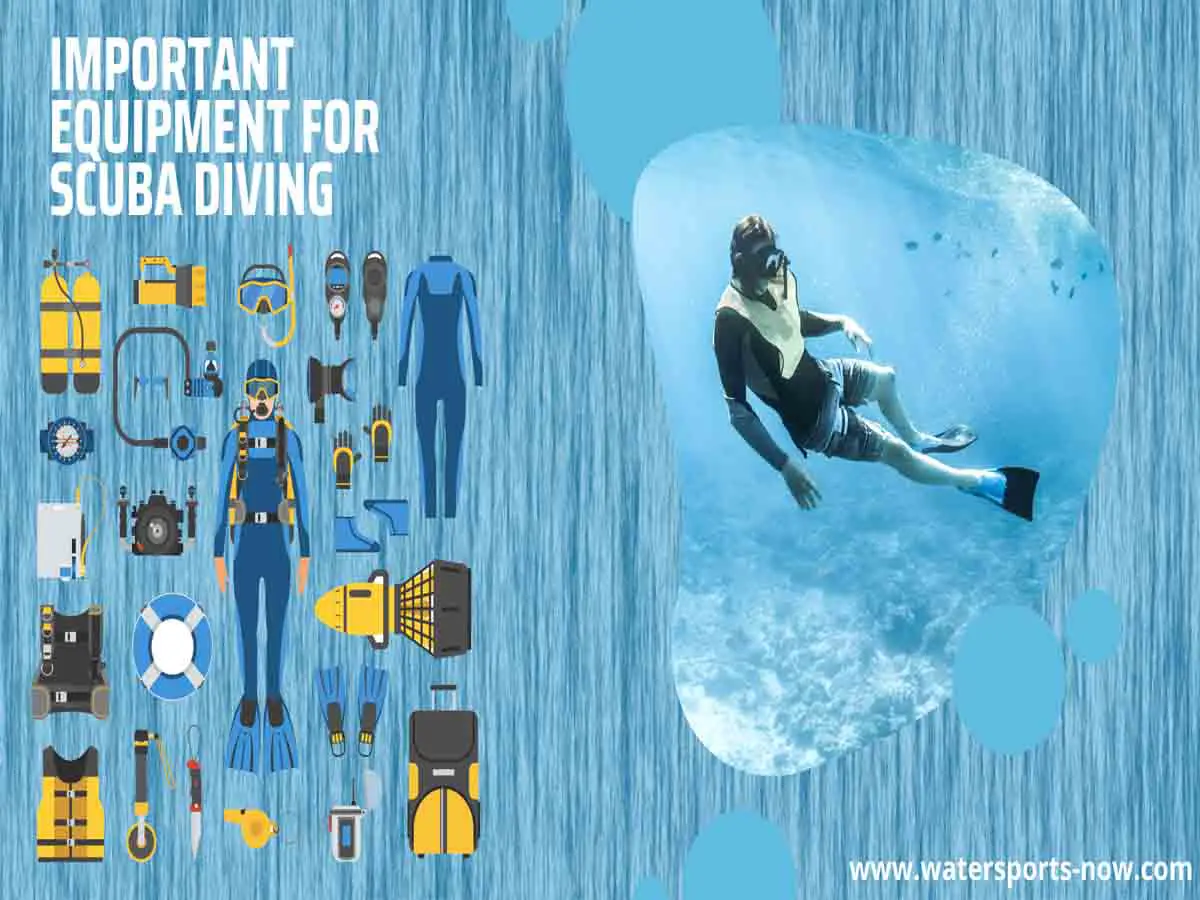
So you’re thinking of taking the plunge and learning to scuba dive? That’s awesome! But before you get too deep into the details (pun intended), you’ll need to figure out the cost. How much will it cost to get certified? How much will it cost to rent gear? How much do trips usually cost?
In this post, we’ll break down the average costs of learning to scuba dive, renting gear, and going on trips. By the end, you’ll have a good idea of what to expect financially and can start planning your underwater adventures!
How Much Does Scuba Diving Cost
So you’ve decided to take the plunge and learn how to scuba dive! Congratulations! But before you get too excited, you may be wondering just how much this new hobby will cost you.
The average cost of scuba diving varies depending on a lot of factors, such as how many dives you take each year, how far away from home you’re diving, and the type of gear you need. However, on average, a beginner’s course will set you back around $300, and then an additional $50-$100 for each dive.
Of course, there are ways to save money on scuba diving. You can find cheap or even free courses if you look in the right places, and many dive shops offer discounts for repeat customers. Just be sure to do your research before signing up for anything!
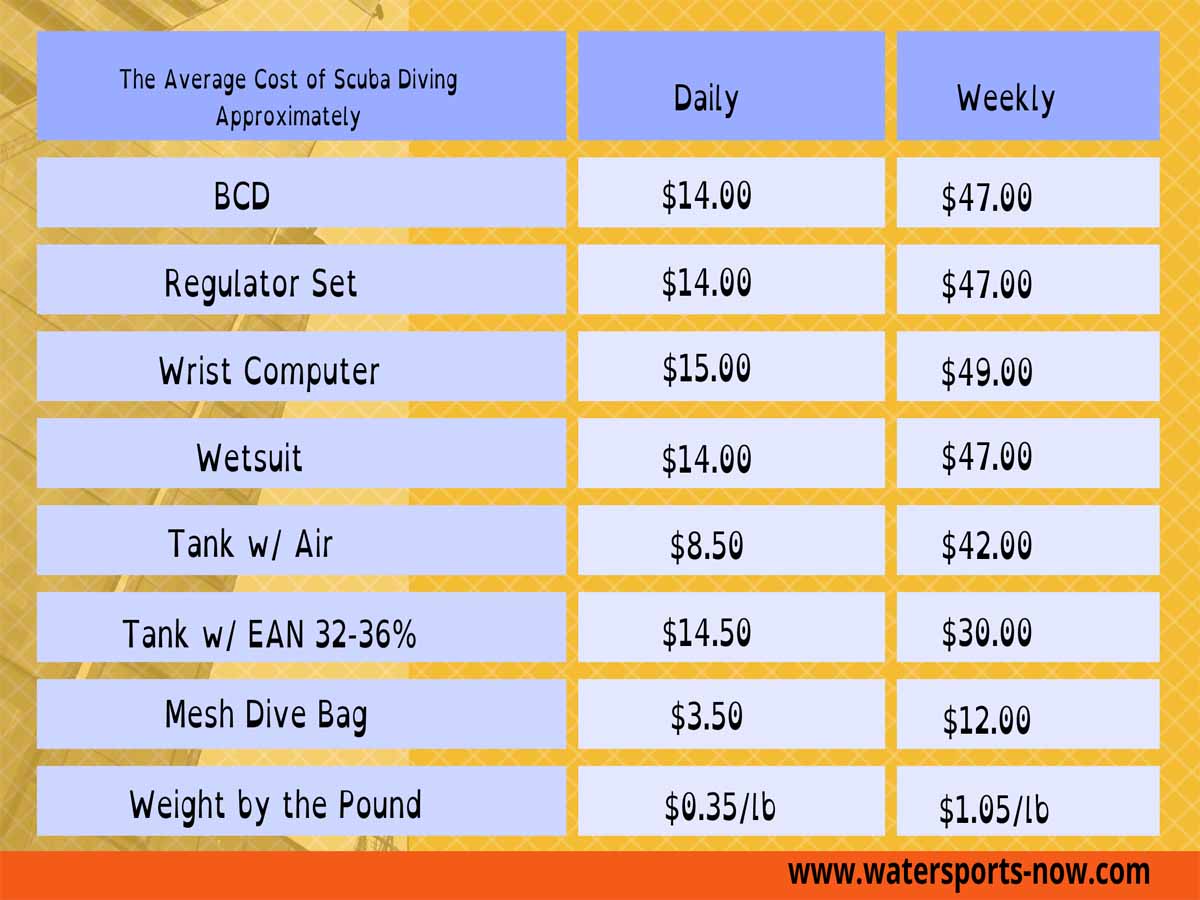
The Average Cost of Scuba Diving Certification
So you’re thinking about getting your scuba diving certification? Great! But how much is it going to cost you?
The average cost of getting scuba diving certified is around $500. This includes the price of the lessons, equipment rental, and certification card. There may be additional costs if you need to purchase special gear or travel to a diving destination.
But remember, the lifetime enjoyment and memories you’ll get from scuba diving are priceless! So the investment is definitely worth it.
How Much Does Snorkeling Cost
Snorkeling is a great way to get up close and personal with marine life without having to learn how to scuba dive. The average cost for a snorkeling trip varies depending on where you go, but it’s typically much cheaper than diving.
In most places, you can rent snorkeling gear for a few dollars per day. If you’re looking for a guided tour, expect to pay around $50-$100 per person. If you’re feeling adventurous, you can also try exploring on your own- just make sure you know the safe areas to swim in!
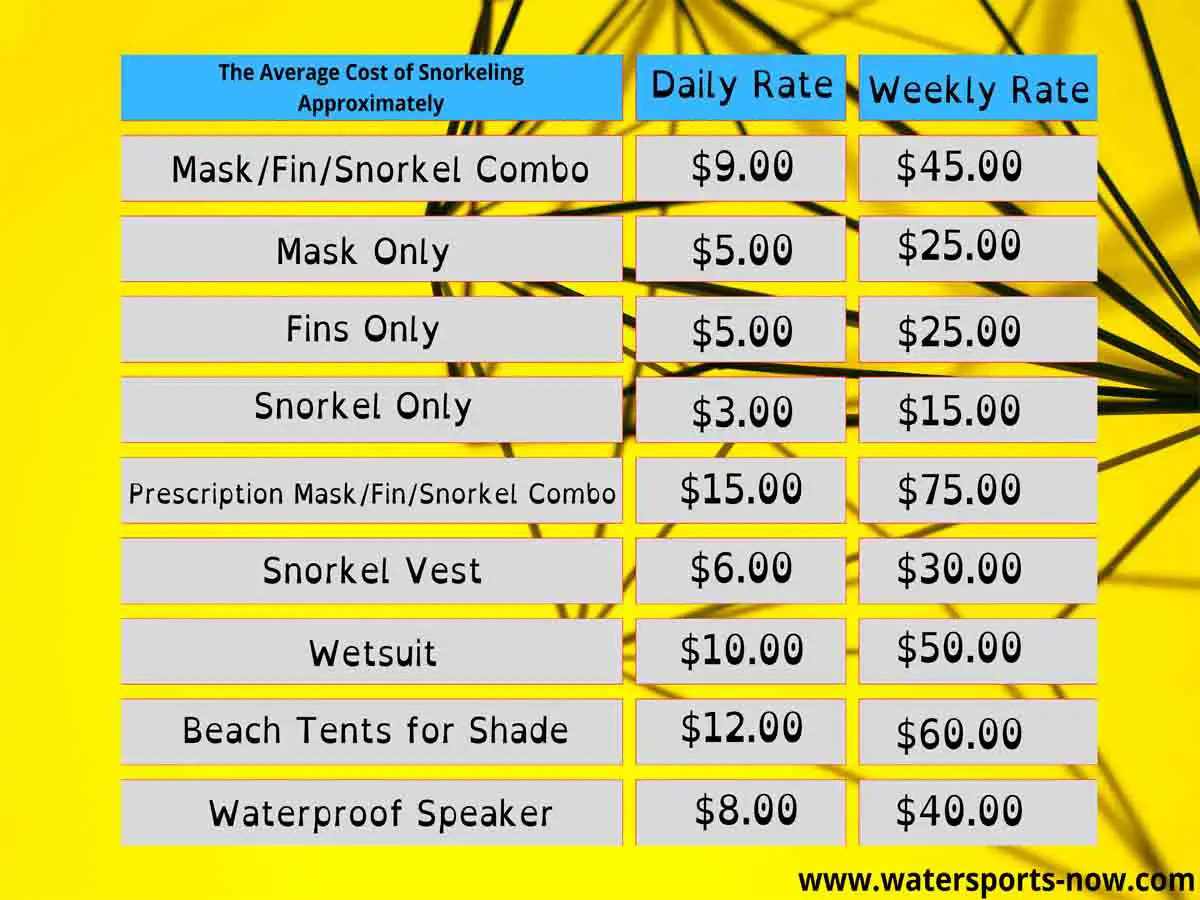
The Average Cost of Snorkeling Certification
If you’re interested in getting into the sport of scuba diving, the next step is to figure out the average cost of certification. The price varies depending on the dive school you choose and the level of certification you’re seeking, but generally speaking, the cost ranges from around $200 to $1,000.
Once you have your certification, the next step is to purchase some basic scuba equipment. This will set you back another $200 to $1,000, depending on the quality and type of gear you choose.
So, all in all, the average cost of getting into scuba diving can be anywhere from $400 to $2,000. But don’t let that scare you away – the experience is well worth it!
The Average Cost of Equipment Rental
When it comes to the cost of equipment rental, there are a few things to consider. The first is the type of equipment you need. Most dive shops offer a range of gear, from wet suits and BCDs to regulators and tanks. The more gear you need, the more it will cost to rent.
Another thing to keep in mind is the length of your rental period. Most shops offer discounts for longer rentals, so if you know you’ll be diving for a few days or weeks, it’s worth enquiring about the rates.
Finally, there’s the matter of insurance. Most rental shops require customers to have their own diving insurance, which can add an additional cost to your rental.
The Average Cost of a Dive Trip
So, you’re interested in learning to scuba dive? That’s great! The sport of diving is an amazing way to explore the world’s oceans and waterways. But before you jump in head-first (pun intended), it’s important to understand the costs involved in learning and diving.
On average, a beginner scuba diving course will cost around $200-$300. And once you’ve completed your training, the next step is booking a dive trip.
Dive trips can vary significantly in price, depending on the destination and level of luxury desired. However, most trips will cost somewhere between $800 and $2,000 per person.
So, what do you think? Are you ready to take the plunge?
How Deep is Snorkeling
So, you’re thinking about taking up scuba diving? That’s great! Scuba diving is an amazing experience that everyone should try at least once in their life. But before you take the plunge, it’s important to know about the costs involved.
The good news is that, compared to other water sports like skiing or surfing, scuba diving is relatively affordable. The average cost of a beginner’s scuba diving course is around $200, and equipment rental costs start at around $25 per day. However, if you want to purchase your own equipment, the total cost can be much higher.
One thing to keep in mind is that the deeper you dive, the more expensive it becomes. Most dive sites are only suitable for divers with a minimum of Advanced Open Water certification, which usually costs an additional $200-$300. So if you’re looking to explore the deep sea on your next vacation, be prepared to pay a little bit more!
When it comes to diving, there are two main types: snorkeling and scuba diving. Snorkeling is a surface dive where you use a snorkel and fins to move around underwater, whereas scuba diving is a deeper dive using a tank and air supply.
Both types of diving have their own costs associated with them. In this post, we’ll take a look at the average costs of getting certified for each type of diving, as well as the average costs of equipment.
Skill Level
Snorkeling does not require any special training or licenses, so even swimmers without diving expertise can participate. The repetitive holding of breath required for snorkeling in reefs deeper than 12 feet will take more practice and experience.
Contrarily, it should be very clear that scuba diving requires extensive training in both deep water diving and operating breathing apparatus, as well as a diver certification to further verify that they have the necessary knowledge and competence to keep themselves safe throughout each dive.
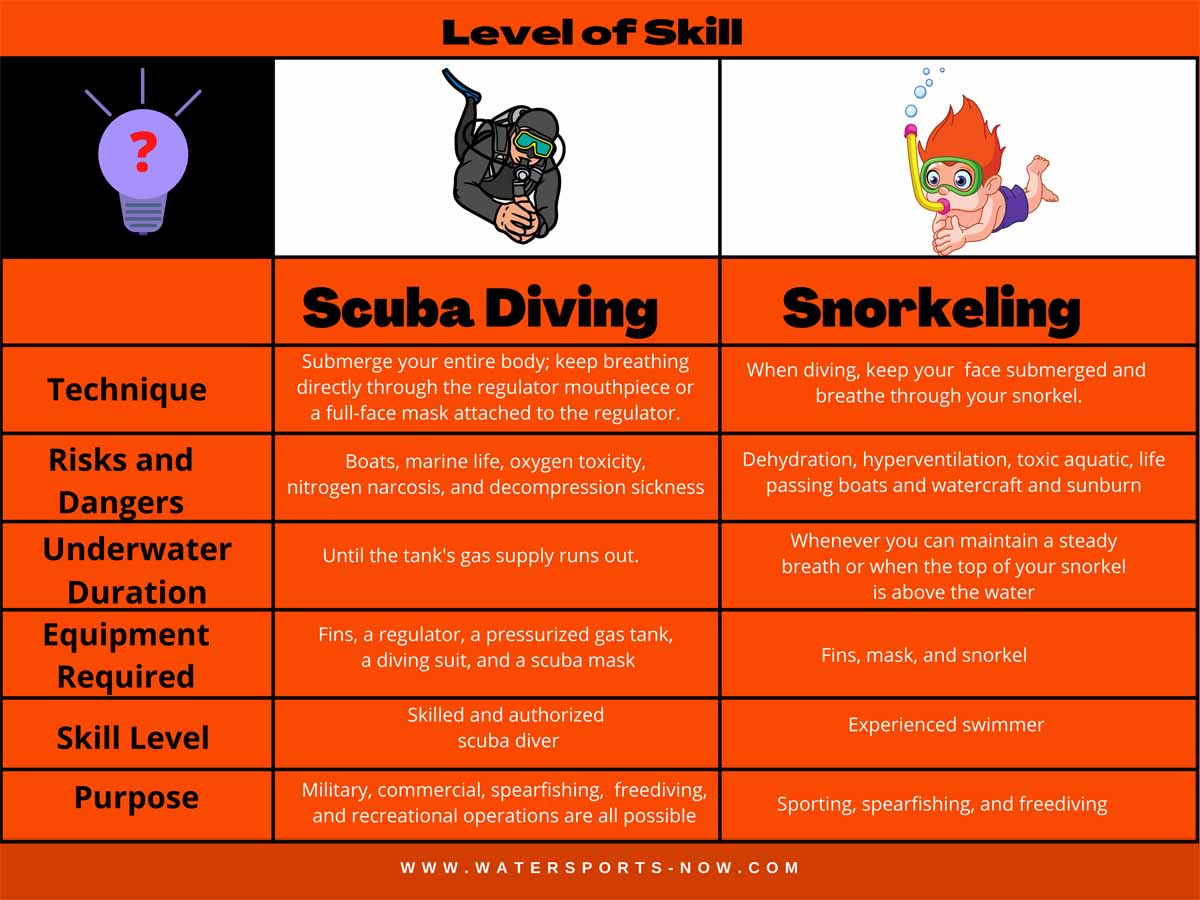
How Does Snorkeling Work Underwater
Snorkeling is a fun activity that allows you to get closer to marine life than diving does. It is a safe activity when done correctly and can be great for your health. However, it can be dangerous if you don’t know how to do it safely and can be expensive. On the other hand, snorkeling underwater can be a lot of fun and is a great way to explore underwater nature.
Snorkeling is a fun and safe activity when done correctly. It is a great way to get in shape and see fish and coral you normally wouldn’t see in the water. It is also a great way to learn about the underwater environment. There are a lot of benefits to doing this activity and it can help you get in better shape.
Snorkeling underwater is a great way to explore underwater nature. Taking a trip under the sea opens your eyes to all the amazing creatures and precious resources that exist there. It is also a great way to learn about the underwater environment. You can collect samples to take back to your home and share your knowledge with others.
There are a lot of ways to safely with snorkeling. You can go with a guide or just read up on the activity beforehand. You can go with a local who knows the area well or a professional who specializes in teaching this activity.
The type of equipment you use can also help you do the activity safely. For example, a floating suit will help you stay afloat in case you sink. A fin can help you move faster in the water and a mask will protect your face from splashes.
Snorkeling can be a lot of fun when you go with a group. You can explore underwater life together and have a lot of fun doing it.
It is also a great way to meet new people and make new friends. The activity is also a lot safer when you go with others and make sure you stay together. If you go on your own, you are putting yourself and other people at risk.
On the other hand, snorkeling underwater can be a lot harder than you think. You need to know how to do it safely in order to avoid any problems. You also need to know what you are up against. Some animals can be dangerous and you need to avoid them. If you don’t know how to do it safely, you can get into a lot of trouble.
Snorkeling can be expensive. You need to have the right gear for the activity and need to pay for it. This means you will need to save up before you go on your adventure. It is also a lot more expensive than just using a diving board and jumping in.
Overall, snorkeling is a safe activity when done correctly.
It can be great for your health, explore underwater nature and make you meet new people. However, it can be dangerous if you don’t know how to do it safely and can be expensive. On the other hand, snorkeling underwater can be a lot of fun and is a great way to explore underwater nature. It is just important to do it safely and know what you are up against.
Which One Is Right for You?
Now that you understand the basic differences between snorkeling vs scuba diving, it’s time to decide which one is right for you. Snorkeling is a great choice if you’re looking for a relaxed, easy-going experience. You can explore the underwater world at your own pace and there’s no need to learn any special skills or take any classes.
Scuba diving is a more challenging activity that requires some training and instruction. However, it gives you access to a much wider range of dive sites and lets you explore the underwater world in greater detail. If you’re interested in learning more about SCUBA diving, check out our article on the best beginner scuba diving tips.
At The End
Snorkeling vs scuba diving is two popular ways to explore the underwater world. Both activities have their own benefits and drawbacks. Snorkeling is a good choice for those who want to stay close to the surface and do not want to invest in expensive gear. Scuba diving is a better choice for those who are comfortable with diving deeper and are willing to invest in quality gear. Contact me if you would like to learn more about it.
You May Also Like
- Best Canoeing Products | 5 Top Rated Reviews
- 5 Best Water Skis in 2022 | Reviews And Comparisons
- Best Kayak for Beginners Review in 2022
- 6 Best Fishing Kayaks Under 500 Dollars | Review it Here
- Top 4 All-Inclusive Canoe Accessories On your Next Trip
- How to Paddle a Canoe: 10 Mistake a Beginner Can Make
- How Much Does a Canoe Cost? 10 Affordable Canoes That You

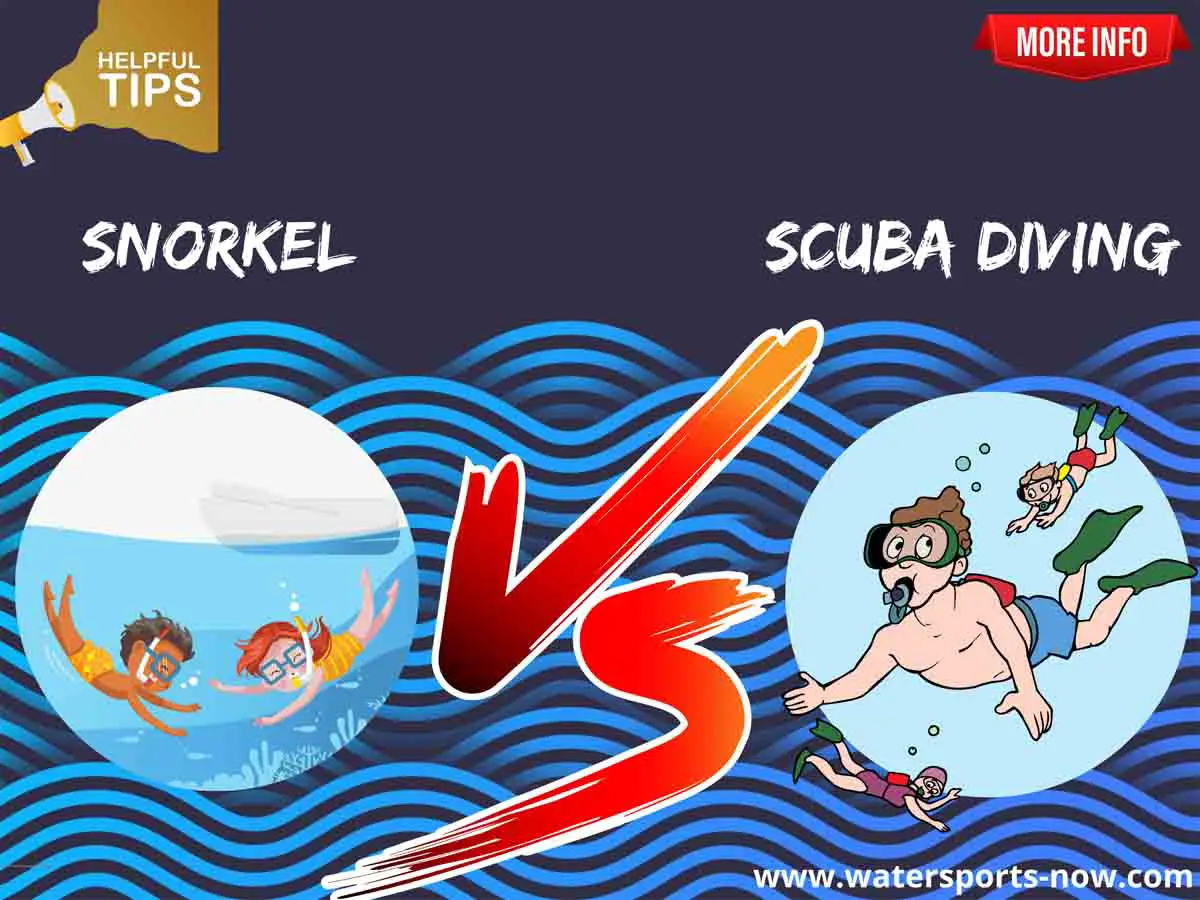
Hello there! I simply want to offer you a huge thumbs up for the great information you have here on this post. I will be coming back to your web site for more soon.
Thank You dear